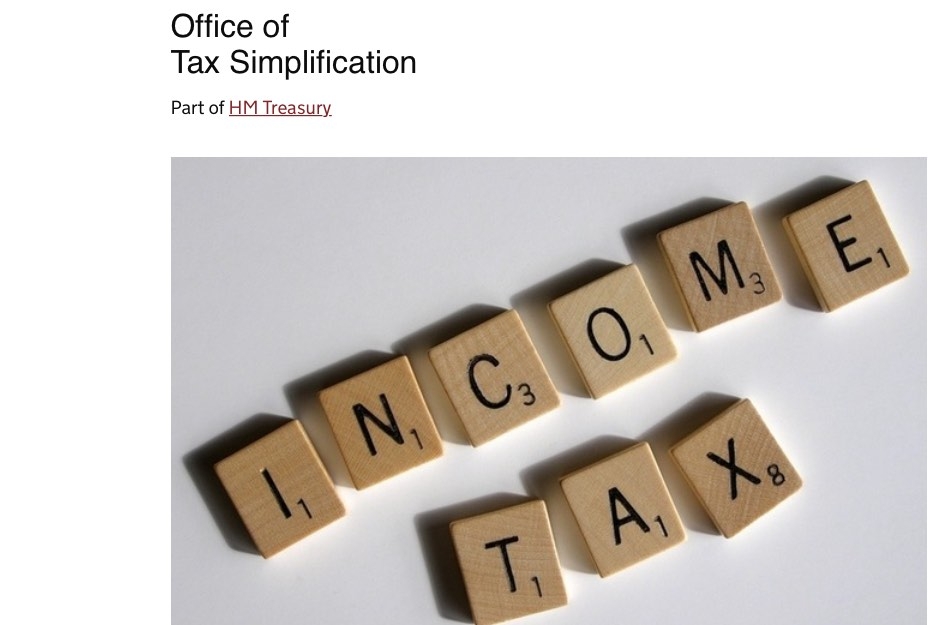
Personal tax changes expected after NIC and income tax review

The biggest change to the personal taxation system in a generation could be coming in next week’s Budget if proposals to reform income tax are adopted, an analyst believes.
The Office of Tax Simplification has been assessing the closer alignment of income tax and national insurance and this week published a report.
It said that bringing the two nearer together has been its recommendation on a number of occasions already. Differences between the two taxes were identified as one of the top causes of complexity for small businesses in one of its first reports.
John Whiting, tax director, Office of Tax Simplification, said: “The message that we want to give ministers is that there are reforms here that many want and which would make a real difference.
“They have the potential to deliver real simplification, greater transparency and greater understanding. They fit with (and take advantage of) the drive to digital and offer some admin savings. Above all there is a need for something of a NICs relaunch to help people gain a better understanding of what is going on.”
Jon Greer, pensions technical expert at Old Mutual Wealth said: “The consultation makes wide-ranging recommendations which are extremely complex. The OTS has highlighted that further work is required to ensure that the implications for the ‘losers’ from any change are fully understood and communicated effectively.
“If the government chooses to take some, or all, of these proposals forward, it will signal the biggest change to the personal tax system in a generation.”
He believes there is “scope for George Osborne to give the green light for an overhaul of national insurance at next week’s Budget”.
He said: “This would be a major and long-term undertaking, requiring huge changes to HMRC’s processes, employer’s payroll systems and legislative structures, which would have a dramatic impact on tax, benefits and pay.
“Self-employed workers would be likely to face big changes, as the OTS’ figures show that, currently, a self-employed worker earning £65,000 would be £3,000 better-off than an employed person with the same salary.”
Angela Knight, Chair of the Office of Tax Simplification, said the review recommends “that the time is now right to consider in detail the case for change”.
She said: “By highlighting the need for change and shining a light on the difficult areas now, the OTS intends not just to inform, but to use this review to commence a full and informed debate on what changes are necessary, how they could be made and the timetable, the challenges for ‘loser’ groups and how we can make change as seamless and as fruitful as possible. We want that debate to lead to a system that is ready for the future.”
The OTS recommended:
- That the OTS continues work to fully explore the impact of ACA on individuals, businesses, the exchequer and the administration, and sets out options and choices for consideration prior to any implementation.
- That the OTS fully explores the impact on individuals, businesses, the exchequer and the administration, to include the sectoral impact, of a move to a payroll based charge, and sets out options and choices for consideration prior to any implementation.
- Changing the name of Class 1 Secondary NICs, perhaps to Payroll Levy as the link to individuals’ NICs calculations will no longer apply
- That the planned HMRC / HMT / DWP / BIS working group on employment status is expanded to include the OTS and also considers the position of the self-employed with a view to considering harmonising rules and procedures.
- That the OTS should also be formally involved with the group and the wider policy debate, to help drive policy solutions that simplify and appropriately balance matters for the self-employed.
- Bringing the NICs position for the UK’s self-employed towards that of employees, to remove complexity and potentially to converge benefits.
- Ensuring that what is liable to IT for the self-employed is also liable to NICs.
- Aligning the legislation and procedures, and where possible the matrix of rates and thresholds. HMRC guidance and support needs to be better linked and a legislative route found to ensure that changes to IT and NICs are simultaneous and equivalent.
